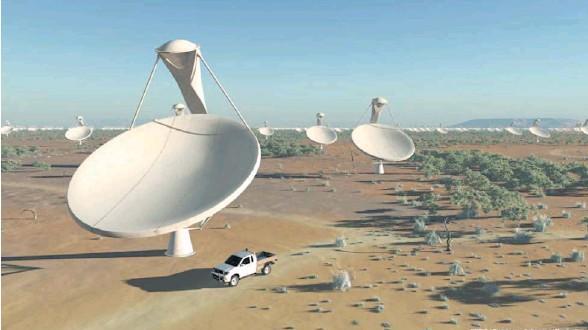
SPACE, they say, is the final frontier and a remarkable little university in the Eastern Cape is playing a significant role in exploring what it holds.
Rhodes University – which has a 50-year history in radio astronomy – and many of its former and current staff and students have formed a formidable force in laying the groundwork for the Square Kilometre Array (SKA) – a revolutionary radio telescope billed as the “biggest and most sensitive” telescope ever.
Pundits say SKA will “revolutionise science by answering fundamental questions about the origin, nature and evolution of the universe”. It is considered by scientists and the South African government as “the next big thing” in astronomy and follows hot on the heels of the success of the Southern African Large Telescope (Salt).
But while Salt is the largest single optical telescope in the southern hemisphere, SKA is far more ambitious and will be made up of thousands of receptors (dishes) linked together across a square kilometre.
South Africa – and its eight African partner countries – are hoping that a wide open area in the Karoo, near Carnarvon in the Northern Cape, will be the “massive area” in which the SKA will be built.
Australia is also bidding to host the project – which can only be established in an area relatively free of man-made radio waves.
Already, South Africa is building the Karoo Array Telescope, known as MeerKAT, a “precursor instrument” to SKA – but one that is, in its own right, among the largest and most powerful telescopes in the world. And central to MeerKAT and South Africa’s bid to have SKA here is a hard-core group of former and current Rhodes staff and students.
Rhodes has been awarded one of five research chairs, the main function of which would be to support SA’s bid to host SKA. Rhodes physics and electronics professor Justin Jonas is the associative director for science and engineering on the MeerKAT project team – and he says he is supported by a large network of people, many with links to Rhodes.
“Rhodes staff, students, alumni and protégés of people from Rhodes form a large fraction of the key people in the project,” said Jonas. Many are now at other institutions or in industry but the Rhodes link is strong. This is hardly surprising as Jonas says Rhodes university has a longer history in radio astronomy than any other university in South Africa – going back all the way to the 1960s.
The MeerKAT project was given a head start by involving Rhodes alumni such as Professor Gerhard de Jager, Dr Dirk Baker and Professor Mike Inggs, who “have a wealth of experience in the fields of science and engineering required to develop the telescope”.
So successful have the Rhodes alumni been on the project, that SKA South Africa’s human capital development programme is looking to replicate the university’s electronics and physics department African universities.
“It’s not just about developing a telescope. It’s about developing and retaining skilled people in Africa,” said Jonas.
A decision on the location of SKA should be made within the next few years. In its favour is the great view of space that we have from the southern hemisphere and the wide open, relatively radiowave-free areas of the Karoo. But wherever they finally locate the project, with MeerKAT well under way, the SKA’s the limit for Africa.
Picture: Supplied: THE SKA’S THE LIMIT: An artist’s impression of the Square Kilometre Array, a revolutionary radio telescope.
By Adrienne Carlisle
Source: Daily Dispatch.
